How to choose the Right IT Support Solution: ITSM vs Service Desk vs Help Desk
As technology continues to evolve at a rapid pace, how can your business keep up? The first step is by choosing the right IT support solution, whether that’s ITSM, Service Desk, or Help Desk.
Any entrepreneur will tell you that it’s not enough for their business to be reactive—it needs to be proactive, too. And the same practice applies to your IT department. An IT department must be proactive when it comes to dealing with technological operations. However, a company’s internal IT team is often so overwhelmed and under equipped that it can feel like they’re fighting a losing battle.
In addition, an IT department is facing an ever-changing landscape when it comes to technology. It’s no longer enough to be on defence when it comes to cybersecurity; a company needs to be actively threat-hunting. Companies need to rely on a strong IT foundation in order to increase productivity, tackle new projects, and achieve significant growth.
So how do I grow my company using my IT department?
The answer is threefold: Grow your company through IT support solutions like ITSM, Service Desk, and Help Desk.
Let’s explore those three IT support solutions and find out which one is right for your business.
ITSM
So, what is ITSM? ITSM stands for IT Service Management. ITSM is a comprehensive approach to managing IT services within an organization. It encompasses various strategies, processes, and tools designed to ensure that IT services match up with the needs of the business. The primary goal of ITSM is to plan, deliver, and support IT services within your organization.
F12’s ITSM program transforms your in-house IT department from reactive to proactive. We equip your IT team to deliver outstanding customer service—anywhere, anytime. An ITSM service platform comes with a whole host of benefits:
- Elevate internal customer experience
- Track and manage SLAs
- Improve IT productivity
- Remotely manage and control assets
- Drive accountability
- Measure results and satisfaction
- Justify IT changes and investments
- Identify and reward excellence
- Secure IT documentation
- Move IT from reactive to proactive
What are some ways ITSM improves efficiency and customer satisfaction?
Service Strategies
ITSM helps organizations define clear strategies for delivering IT services, matching them to business objectives, like customer-oriented data collection and distribution.
Service Design
ITSM takes care of planning and designing your company’s IT offerings and infrastructure, making sure to consider factors like cost, quality, and scalability.
Service Operations
ITSM ensures that your IT services are running smoothly—all day, every day—resolving incidents and fulfilling service requests promptly.
Service Improvement
ITSM platforms are run by techs who are constantly on the lookout for better ways to operate and enhance both service quality and efficiency.
Service Desk
So what does a Service Desk do? A Service Desk is a component of a thorough ITSM platform. It is a central point of contact within an organization that handles IT-related incidents, service requests, and inquiries from end-users. In addition, it serves as the frontline support for IT-related issues, ensuring that users receive timely assistance.
What’s useful about a Service Desk is the speed with which an incident can be resolved. As a result, downtime and disruption are minimized. Not to mention that a single point of contact for its users simplifies the support process—and significantly improves user satisfaction.
A Service Desk covers a range of IT requirements for your organization:
Incident management
Service Desks excel in managing and resolving incidents like system outages, software crashes, or hardware failures.
Request fulfillment
Service Desks facilitate the process of fulfilling service requests like password resets or software installations and employee onboarding.
User support
Service Desks provide direct user support to employees, offering assistance and guidance on any number of IT-related issues.
Difference Between a Help Desk and a Service Desk
So: “What’s the difference between a Service Desk and a Help Desk?” Let’s go over the key differences between a Service Desk and a Help Desk.
A Help Desk is actually a subset of a Service Desk, primarily focused on addressing user inquiries and providing assistance. While a Service Desk handles incidents and service requests, a Help Desk specializes in offering guidance and solutions for non-technical issues. Think of a Help Desk like a good friend who’s great at all things tech; the Help Desk is someone you can reach out to with any IT-related questions, comments, and concerns.
A benefit of having a Help Desk in addition to a Service Desk is a reduced workload for your IT department. By handling non-technical inquiries, the Help Desk alleviates the workload of the Service Desk, allowing them to focus on technical snags and bigger problems.
What are some problems my IT Help Desk can solve?
Help Desk inquiries
- Help Desks manage inquiries related to policies, procedures, and general information—often unrelated to technical support problems!
User guidance
- Having trouble getting the most out of your software? Help Desks offer guidance and support, helping users navigate their office systems efficiently.
Knowledge base
- A Help Desk will often have FAQs and self-help resources for users to access.
Best Practices for Choosing the Right IT Tools
Selecting the right IT support tool is crucial for optimizing your organization’s IT support capabilities—which, in turn, is crucial for growing and scaling your business. So when it comes to choosing the right IT tools, you need to review your options: ITSM vs Service Desk vs Help Desk.
Assess your needs
Start by evaluating your organization’s specific needs and requirements. Consider factors like:
- Size of your organization
- Complexity of your IT infrastructure
- Volume of support requests
- How your data and assets are managed
Scalability
Choose tools that can scale with your organization’s growth. Can your IT handle increased demand and evolving requirements?
Integration
Avoid major headaches by selecting IT tools that seamlessly integrate with your existing IT infrastructure, systems, and applications.
Customization
Find an IT partner who tailors your IT support package directly to your specific needs. Choose the tools that best match up with your company’s processes and workflows.
Reporting and analytics
All that hard work of designing, deploying, and integrating your new IT support platforms will have been for naught if you aren’t receiving regular reports. Opt for tools that offer robust reporting and analytics capabilities so you can:
- Track performance
- Identify trends
- Make data-driven decisions for your business
Cost-efficiency
A good IT partner will help design an IT support strategy that fits your needs and your budget. Consider both the initial cost and the long-term expenses of your IT tools, and calculate the return on investment for each option. You don’t want more IT than your business needs–but you certainly don’t want too little, either.
ITSM vs Service Desk vs Help Desk: All Valuable Tools
The world of business, no matter the industry, waits for no one. And now that technology has been firmly embedded in the mix, it’s more important than ever to make sure your company keeps up. Having the right tools and processes in place is essential for providing high-quality support and ensuring the smooth operation of your organization’s IT services. ITSM, Service Desk, and Help Desk each play a vital role in achieving these objectives.
Do you think your company could use help streamlining its IT department with support platforms like ITSM? Want to improve your IT infrastructure, but not sure where to start? Let’s talk tech and find out what’s right for you.



